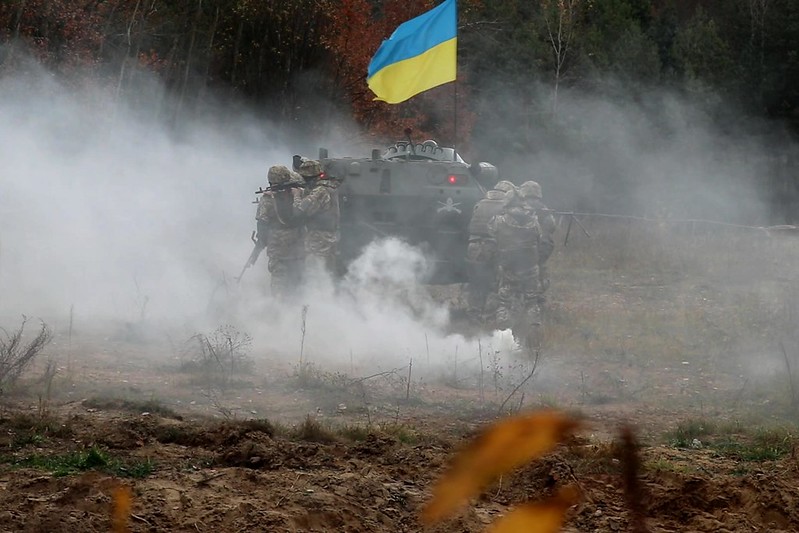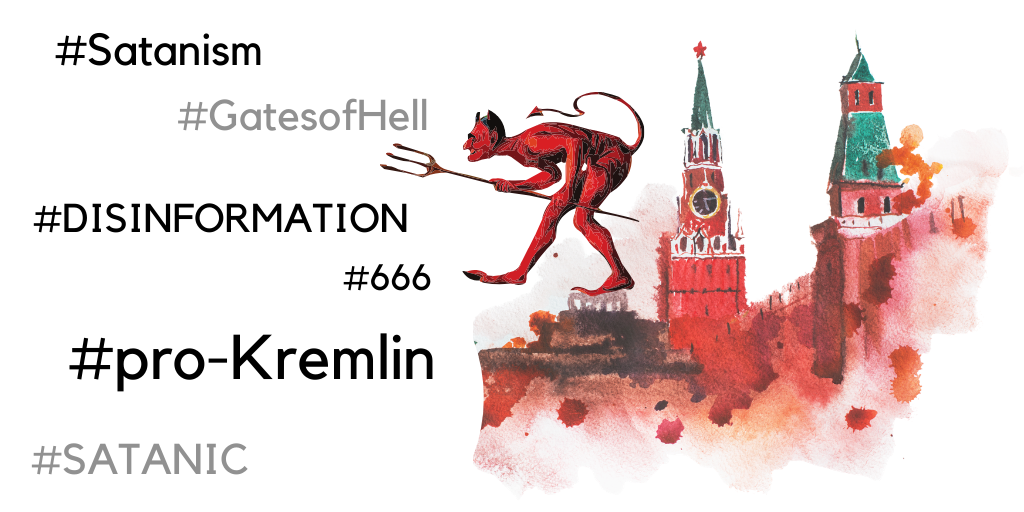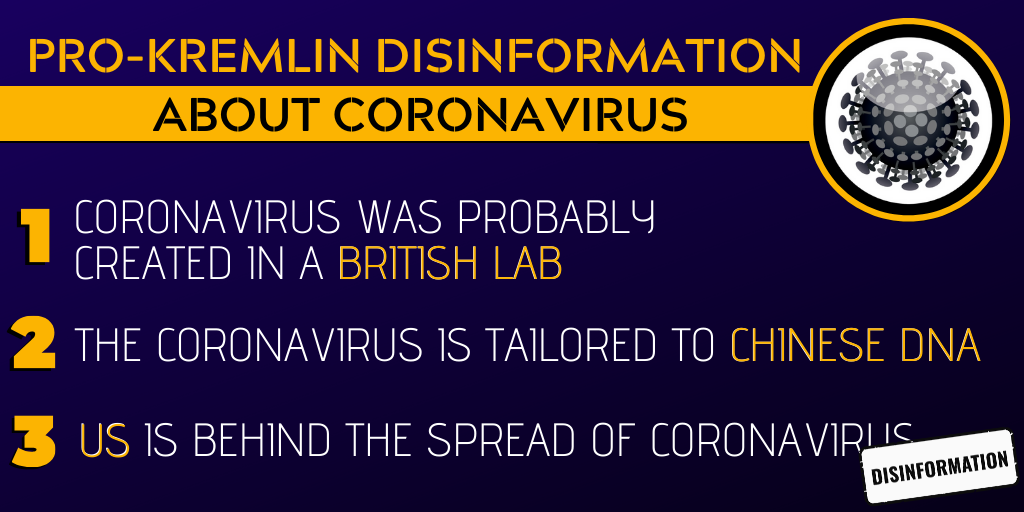Ukraine has still not established a common conceptual understanding or a common terminology. The disparity between the physical and cognitive battlespace and the consequential difference in counterstrategy illustrates the importance of establishing a common understanding.
The National Security Strategy (NSS) of Ukraine was finally approved by the President of Ukraine Monday 14 September.
The document presents the threats Ukraine is facing, prioritizes national interests, and ensures the fulfillment of national security. It is not at least, an opportunity to signal Ukraine’s “will and ability” to the world.
Main points
Establishing peace, restoring the sovereignty and territorial integrity of Ukraine within its internationally recognized state border is the highest priority of Ukraine. Man, his life and health, honor and dignity, inviolability, and security have been prioritized alongside the creation of Ukraine as a free, prosperous, secure state.
The implementation of Ukraine’s national interest includes continued implementation of defense and deterrence measures, active use of negotiation formats and consolidation of international pressure on and support against the Russian Federation, full membership in both EU and NATO, [while full membership in the EU was part of Ukraine's previous 2015 Security Strategy, only the "creation of conditions for receiving NATO membership" was mentioned there - Ed.] and more.
It also describes Ukraine’s ambition for the temporarily occupied territories - Donbas and Crimea. Strangely enough, they differ.
“Restoration of peace, territorial integrity and state sovereignty in the temporarily occupied territories in Donetsk and Luhansk oblasts” is a stated objective for the former.
Logically, one would expect the ambition for the Autonomous Republic of Crimea and the city of Sevastopol to be identical to that of Donbas. Instead, it defines it as “implementation of international legal, political-diplomatic, security, humanitarian, and economic measures aimed at ending the illegal occupation.”

The differentiation is slightly odd since the NSS uses the term “Russian occupation administration” to describe the de-facto authorities in both the temporarily occupied territories of Donbas and the Autonomous Republic of Crimea and the city of Sevastopol.
The discrepancy might reflect the lack of international platforms for negotiating a de-occupation of the latter, or simply a reflection of what Ukraine regards as realistic or not.
The new NSS also gives a comprehensive description of global trends and security challenges.
It sees tendencies of
less, not more international cooperation:
- Protectionism and tendencies towards regionalism are intensifying;
- New models of civilizations are being formed;
- Interstate associations and international organizations are being transformed;
- The challenges to transatlantic and European unity are growing, which could lead to the escalation of existing conflicts and the emergence of new ones;
- The global situation is characterized by a high degree of uncertainty and unpredictability.
The assessment goes far beyond the Russian Federation. More importantly, the strategy covers a broader range of non-military threats than the old version from 2015.
The NSS acknowledges that Russia is conducting Hybrid aggression against Ukraine. It states that Ukraine is exposed to the use of both military and non-military threats from the Russian Federation (and other States) to provoke internal conflicts. This includes the systematic use of political, economic, informational, psychological, cyber, and military means.
The scope of the Russian military threat has been equally defined.
NSS sees the enduring capability building, military posturing, militarization of the temporarily occupied territories, and large-scale military exercises as a testimony of a persistent threat of military invasion.
Crucially, it describes a 3-dimensional threat, involving both land, air, and the maritime domain.
The threat from the Russian Federation to free navigation in the Black and Azov Seas and the Kerch Strait has been highlighted alongside that of an invasion.
The new NSS has, however, removed any references to nuclear weapons in Crimea.
According to the new strategy,[highlight] Russia intends to “restore its influence in Ukraine.”[/highlight]
Weaknesses
This is where I will slowly start pointing out some of the weaknesses of the new strategy.
The Russian strategic aim, as described by the head of Foreign Intelligence Service (FIS) is in my opinion, far better and more in line with the instruments NSS states Russia is employing. According to FIS, Russian strategic goals remain unchanged:
“bringing Ukraine back into the orbit of total influence, eliminating its national identity and independence, establishing external control over the ongoing processes in the country, and ultimately terminating Ukraine as a sovereign state.”
This assessment acknowledges that the Hybrid War is not about the physical domain (e.g. territory or the military capabilities). The main battlespace is the mind and consequently, the “cognitive spaces of both populations and key decision- and policymakers.”
Some of the assessments made in 2015 supporting the head of FIS have been weakened or excluded altogether.
- Russian global ambitions are hardly acknowledged in the latest version. It is no longer striving to “undermine the unity of the democratic international community, to revise the world order which was formed up upon the end of the WWII, and to violate fundamentals of international security and law.” It is taking advantage of the situation.
- The Russian global engagements are connected to “influence” (e.g. diplomacy, meddling in elections, referendums, and politics, information operations, cyberattacks, etc.). However, an acknowledgment of its global ambitions would help strengthen the perception of the Hybrid War. More importantly, it would explain how crucial Ukraine is to the Russian “imperial” ambitions, thereby killing the notion of a simple, political solution to Russian aggression.
- The 2015 assessment of “informational-psychological warfare, the humiliation of the Ukrainian language and culture, defaming Ukrainian history, creating a distorted alternative informational picture of the world by the Russian Mass Media” has been excluded. This is of concern as the pro-Russian control of Ukrainian media is growing.
[highlight]All of this goes to the core of the Hybrid War: the mind is the main battlespace.[/highlight]
In contrast, the new NSS defines “restoring the sovereignty and territorial integrity of Ukraine within its internationally recognized state border” as the highest priority.
This is important because both the 2015 and 2020 version of the NSS use the term “Hybrid War.” Neither, however, defines or elaborates what it is.
and the consequential difference in counterstrategy illustrates the importance of establishing a common understanding.
Unfortunately, the National Security Strategy (NSS) of Ukraine suffers from this ambiguity.
- Due to its traditional territorial focus, it fails to outline the main battlefield and an efficient counterstrategy;
- NSS recognizes that Russia is conducting Hybrid aggression against Ukraine without outlining a cross-sectorial, coordinated counterstrategy. The development of 15 unique, independent strategies will not help. Ironically, a Counter Hybrid War Strategy is not one of them.
- According to NSS, Russia will be a persistent threat to Ukraine’s sovereignty and independence. For the last six years, this has forced Ukraine to prioritize its limited budget to rebuild its security and defense sector and has, therefore, effectively been denied the opportunity to meet the expectations of society.This is one of the factors which have impacted the reform process, and consequently the efficiency of state bodies, infrastructure, lack of economic recovery, level of well-being and socio-economic situation, demographic changes, and more.These consequences of the Hybrid War have, however, been translated into “internal threats.” The new strategy, therefore, turns some of its attention inward to what it calls the rooting of radical social sentiments and environments, as the basis for political violence and separatism. Crime threatens the rights and freedoms, the legitimate interests of people, society, and the state.
- Some of the real internal threats have not been addressed. These include oligarchs, pro-Russian political forces and media, anti-reformists, corrupt officials, etc.
- Read also: Zelenskyy is solving the wrong war
The new NSS has one highly admirable feature, which strangely enough, might be potentially damaging.
One of the very first things I remember learning after joining the Armed Forces was that[highlight] “Will and Ability” are the two fundamental elements of deterrence.[/highlight] If either one of them lacks, deterrence fails.
The policy of the President and the Supreme Commander-in-Chief of the Armed Forces of Ukraine has been incorporated into the NSS.
He advocates political solutions of conflicts, very much in line with European security policy. This includes active use of negotiation formats and consolidation of international pressure” as well as “implementation of international legal, political-diplomatic, security, humanitarian and economic measures.” Saving the lives of Ukrainian military and civilians is the driving force behind the President desire for a lasting ceasefire, stressing “that Ukraine has done and will do everything to preserve the truce, as it is the only way to save lives.”
At the same time, the strategy gives an honest, self-critical assessment of Ukraine Armed Forces and other Defence Forces, concluding (rightly so) that there is an imbalance between the military capabilities of Ukraine and the Russian Federation. Additionally, it states that Ukraine lacks the economy to close the technological gap.
NATO interoperability, better leadership and increased professionalism, NATO doctrinal approaches to command and control, training, and education, and lastly, NATO membership is described as instruments to alleviate the shortcomings.
Unfortunately, this implies that this vulnerability will not be closed anytime soon.
Even though NSS clearly expresses the necessity to develop deterrence, the above-mentioned policy might inadvertently be seen as a weakened Ukrainian “will,” reducing the deterrence it is supposed to strengthen.





